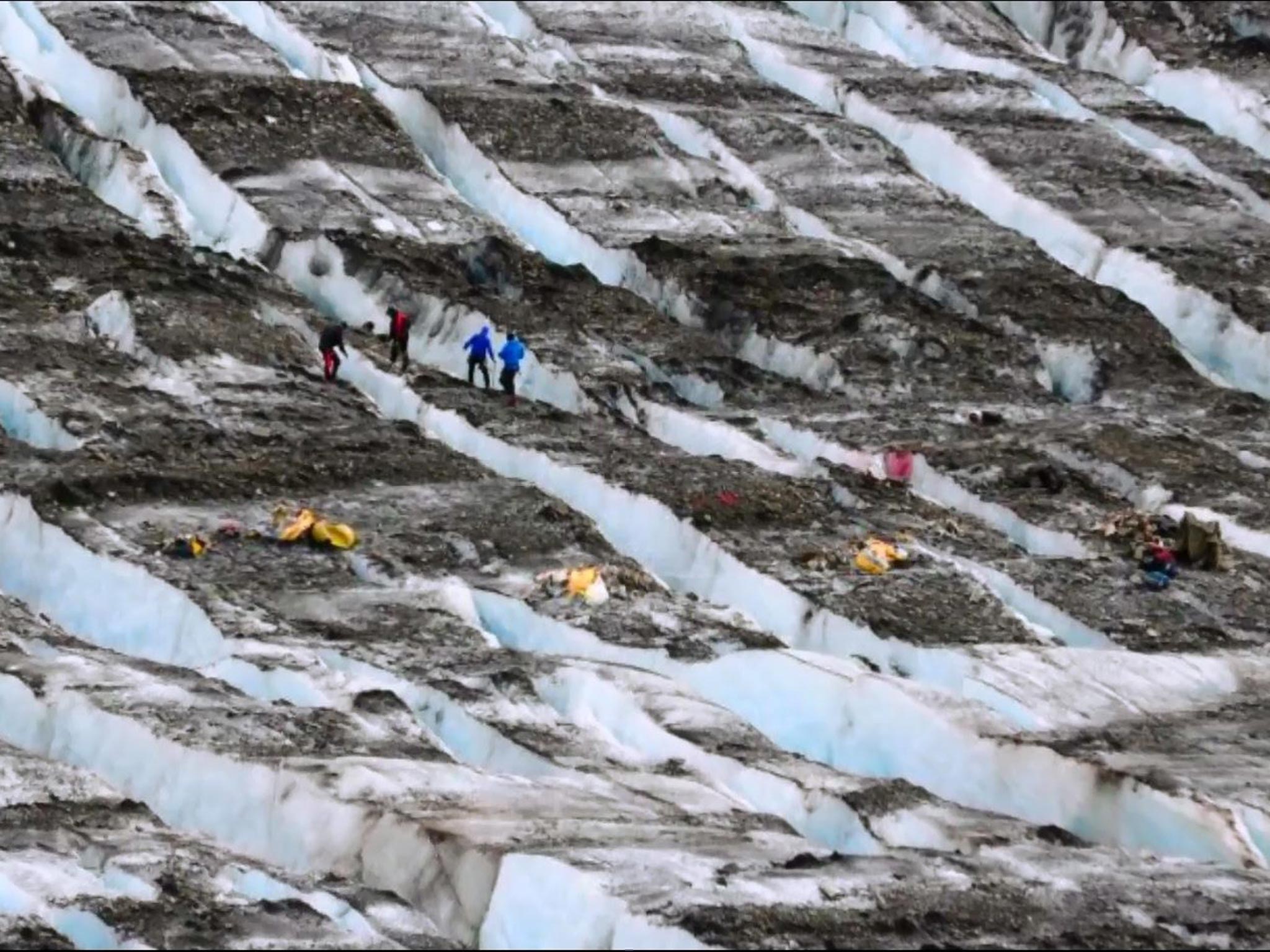Crash site of American military plane found in melting glacier more than 60 years on

Your support helps us to tell the story
From reproductive rights to climate change to Big Tech, The Independent is on the ground when the story is developing. Whether it's investigating the financials of Elon Musk's pro-Trump PAC or producing our latest documentary, 'The A Word', which shines a light on the American women fighting for reproductive rights, we know how important it is to parse out the facts from the messaging.
At such a critical moment in US history, we need reporters on the ground. Your donation allows us to keep sending journalists to speak to both sides of the story.
The Independent is trusted by Americans across the entire political spectrum. And unlike many other quality news outlets, we choose not to lock Americans out of our reporting and analysis with paywalls. We believe quality journalism should be available to everyone, paid for by those who can afford it.
Your support makes all the difference.More than 60 years after an American military transport plane crashed into glacier-clad mountain terrain in the wilds of Alaska, the remains of 17 of the 52 people who perished in the accident have been retrieved from the slowly melting ice and identified for burial, the Pentagon has revealed.
The aircraft, a lumbering C-124 Globemaster, was flying through treacherous weather on 22 November 1952 from an Air Force base in Washington State to the Elmendorf base in Alaska when it came down close to Mount Gannett, east of Anchorage. Because of continuing bad conditions, the search for the wreckage and possible survivors at the time barely lasted a week. Families of the victims were told they would have no remains to bury.
For some of those families, at least, that is no longer the case. Among those on the plane who have now been identified is Pvt. Leonard Kittle, who will be laid to rest with full military honours in Kansas this weekend.
“I’m happy we’re finally going to bring him home,” Beatrice Crawford, 82, his younger sister, told the New York Times. “He’s been up there a long time.”
The first sighting of what looked like the possible crash site was made by a passing Alaska National Guard helicopter two years ago. A National Guard team dispatched to investigate on foot found artefacts from the doomed plane and later a second team from the POW-MIA Accounting Command, which oversees searches for US servicemen lost overseas, took over the case.
Over time, investigators found numerous articles from the crashed aircraft that over the years had slowly been given up by the melting glacier including personnel items like a hockey puck, a pack of camel cigarettes kits and a compass. Slowly, however, they also began finding bones. But it was only this week that the Defence Department revealed that they had found enough remains to tie them to 17 of those who died.
Officials said that the site will remain under careful surveillance giving hope to families not contacted this week that in time the Alaskan ice will give up their loved ones as well.
The service members’ remains will be returned to their families for burial with full military honors, Defense Department officials said. There were 52 crew members and service members from various military branches on board when the plane crashed.
A week after the crash, the military declared Private Kittle and everyone on board dead, said Ms Crawford, of Bartlesville, Okla.
“They told us that they were no longer with us, that they’d given up the hunting,” she said on Wednesday.
The first burial is believed to be planned for Saturday in Caney, Kansas, for Army Pvt. Leonard A. Kittle, said Tonja Anderson-Dell, a Tampa, Florida, woman who has researched the crash for years.
Join our commenting forum
Join thought-provoking conversations, follow other Independent readers and see their replies
Comments